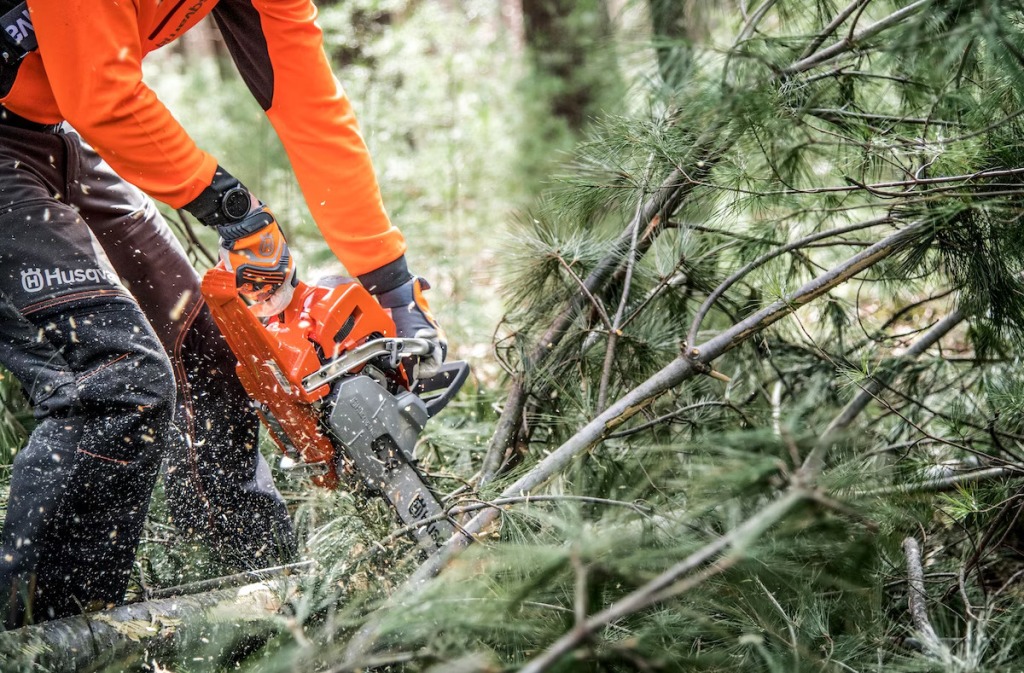Chainsaws are powerful tools, but they can also be extremely dangerous when not used properly. To ensure your safety and the safety of those around you, it's essential to follow strict safety guidelines, use the right equipment, and maintain your chainsaw correctly. In this guide, we'll walk you through the essential Husqvarna 435 chainsaw safety requirements that every user should know.
Before You Start
Before you even think about firing up your chainsaw, there are crucial steps you must take to ensure your safety:
- Inform Someone: Always let someone know where you'll be working and what you'll be doing. In case of an emergency, this information can be lifesaving.
- Parking: If you're working alone, park your vehicle strategically for a quick exit if needed.
- Mobile Phone: Carry a mobile phone with you at all times. It's your lifeline in case of an accident or emergency.
Chainsaw Safety Equipment
Proper attire and safety gear are non-negotiable when operating a chainsaw. While most chainsaws come with mandatory safety features, wearing the right protective equipment further minimizes risks. Ensure your safety gear includes:
- Helmet with Earmuffs and Visor: Protect your head, ears, and eyes from falling debris and noise while using Husqvarna 592 xp.
- Protective Pants or Chainsaw Chaps: These prevent lacerations and injuries to your legs.
- Forestry Jacket/Shirt: Provides upper body coverage, shielding you from branches and other hazards.
- Protective Trousers: These are designed to keep your lower body safe from harm while using Outdoor Power Equipment.
- Anti-Slip Boots: Sturdy footwear with a good grip is essential for stability on uneven terrain.
- Gloves: Protect your hands from cuts and blisters while maintaining a firm grip on the chainsaw.
On-Site Safety Planning
Once you've reached your working site, your safety planning should continue:
- Clear the Area: Ensure no one is within a distance of at least twice the height of the tree you plan to fell. Safety should be a top priority.
- Tree Assessment: Examine the tree for signs of decay, cracks, or instability. Determine its natural falling direction and whether it leans in a particular way.
- Felling Direction: Most trees have a natural falling direction influenced by various factors. If uncertain, use a plumb line to confirm.
- Expertise Matters: Attempting to force a tree to fall against its natural direction requires skill, experience, and the right tools. Dead or decayed trees should be felled in the easiest direction.
Chainsaw Handling Tips
Proper Husqvarna 435 Chainsaw handling is the key to minimizing the risk of injury or strain:
- Thumb Grip: Wrap your thumbs and fingers securely around the handles. Place your left-hand thumb under the front handle to reduce the force of a kickback.
- Close Contact: Don't fear the chainsaw; hold it close to your body to maintain balance and accuracy.
- Positioning: Stand with your left foot in front of your right, keeping your knees bent, not your back.
- Chain Off: Never move the chainsaw while the chain is rotating. Ensure it's stationary when relocating.
- Safety Distance: Maintain a minimum of 3 meters of clearance from others when working with a chainsaw.
Also Visit – Exploring Kid-Friendly Leaf Blowers: A Comprehensive Guide
Chainsaw Safety Features – and Their Functions
Understanding your chainsaw's safety features is essential for safe operation:
- Kickback Guard and Chain Brake: These features stop the chain if the chainsaw isn't handled correctly or in the event of a kickback.
- Throttle Lock: Designed to ensure the chainsaw only functions when you keep a certain button pressed.
- Chain Catcher: Prevents the chain from flying off in case of chain breakage or derailment.
- Right-Hand Guard: Protects your right hand in case of chain breakage or derailment.
- Stop Control: Easily accessible control to stop the chain instantly.
Two Quick Chainsaw Safety Tips
- Take a Chainsaw Course: Even if you're a beginner, consider taking a chainsaw safety course. Learning from experts is invaluable, and practicing on your own without guidance can lead to learning the wrong techniques.
- Regular Equipment Checks: Your chainsaw comes equipped with safety features. Make it a habit to inspect and maintain these features regularly. A well-maintained chainsaw is a safer one.
By following these chainsaw safety requirements and guidelines, you can significantly reduce the risks associated with chainsaw operation. Prioritizing safety ensures that you and those around you stay protected while using this powerful tool.
